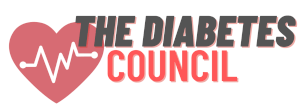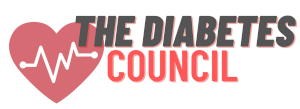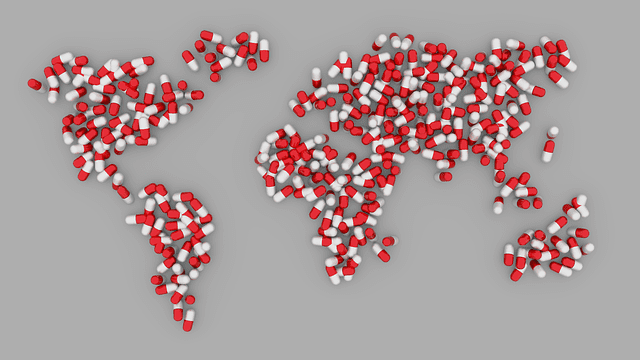Compared to all other 33 OECD countries around the globe, United States is spending more than twice the amount of the average healthcare expense of all OECD countries. In 2017 alone, $3.4 trillion was spent on healthcare. Yet there are still millions of individuals who are living without insurance coverage and health care. And what is worse is that as the healthcare spending escalates each year, the American average life span is declining. Are we truly spending the majority of that $3.4 trillion on patient care? Here are 50 alarming statistics on the American healthcare system you should know:
- As of 2018, there are 327.96 million Americans living in the United States. (United States Census Bureau)
- In 2016, the expectancy in US dropped to 78.7 years. (CDC’s National Center for Health Statistics) The number is 1.5 years lower than the average life expectancy of the Organization for Economic Cooperation and Development (OECD) which comprises of the 34 most developed countries of the world.
- In 2018, the average life expectancy in US dropped to 76.3 years and placed 27th within the OECD list:
| Rank | Country | Average Life Expectancy |
| 1 | Iceland | 81.20 |
| 2 | Japan | 80.80 |
| 3 | Switzerland | 80.80 |
| 4 | Norway | 80.50 |
| 5 | Australia | 80.40 |
| 6 | Sweden | 80.40 |
| 7 | Italy | 80.30 |
| 8 | Israel | 80.10 |
| 9 | Spain | 80.10 |
| 10 | Luxembourg | 80.00 |
| 11 | Netherlands | 79.90 |
| 12 | New Zealand | 79.90 |
| 13 | Canada | 79.60 |
| 14 | Ireland | 79.60 |
| 15 | France | 79.20 |
| 16 | United Kingdom | 79.20 |
| 17 | Korea | 79.00 |
| 18 | Austria | 78.80 |
| 19 | Denmark | 78.80 |
| 20 | Belgium | 78.70 |
| 21 | Finland | 78.70 |
| 22 | Greece | 78.50 |
| 23 | Germany | 78.30 |
| 24 | Portugal | 78.10 |
| 25 | Slovenia | 77.80 |
| 26 | Chile | 76.70 |
| 27 | United States | 76.30 |
| 28 | Czech Republic | 75.70 |
| 29 | Turkey | 75.30 |
| 30 | Poland | 73.50 |
| 31 | Estonia | 73.20 |
| 32 | Slovak Republic | 73.10 |
| 33 | Hungary | 72.30 |
| 34 | Mexico | 72.30 |
The number falls much behind the average life expectancy of OECD of 78.15. (OECD)
- In 2017, 79% of the adult population had seek medical assistance from a health care professional at least once within the year. (Institute of Medicine “The Healthcare Imperative: Lowering Costs and Improving Outcomes)
- $3.4 trillion are spent on the United States health care system in 2017. (The Atlantic)
- It has been projected that by 2019, the cost will reach $4.5 trillion. (Institute of Medicine “The Healthcare Imperative: Lowering Costs and Improving Outcomes)
- As of 2016, an average of $9,700 is spent on the healthcare of each American. (Center for Disease Control).
- According to OECD data, United States has consistently rank as having the highest average healthcare cost per person:
| Rank | Country | Annual Average Healthcare Spending Per Person |
| 1 | United States | 9 892.3 |
| 2 | Switzerland | 7 919.0 |
| 3 | Luxembourg | 7 462.8 |
| 4 | Norway | 6 647.5 |
| 5 | Germany | 5 550.6 |
| 6 | Ireland | 5 528.4 |
| 7 | Sweden | 5 487.5 |
| 8 | Netherlands | 5 385.4 |
| 9 | Austria | 5 227.3 |
| 10 | Denmark | 5 205.0 |
| 11 | Belgium | 4 839.8 |
| 12 | Canada | 4 752.8 |
| 13 | Australia | 4 708.1 |
| 14 | France | 4 600.4 |
| 15 | Japan | 4 519.3 |
| 16 | Iceland | 4 376.3 |
| 17 | United Kingdom | 4 192.5 |
| 18 | Finland | 4 033.4 |
| 19 | New Zealand | 3 589.6 |
| 20 | Italy | 3 391.2 |
| 21 | Spain | 3 248.4 |
| 22 | Slovenia | 2 834.8 |
| 23 | Israel | 2 822.3 |
| 24 | Portugal | 2 734.4 |
| 25 | Korea | 2 728.8 |
| 26 | Czech Republic | 2 544.3 |
| 27 | Greece | 2 223.0 |
| 28 | Slovak Republic | 2 149.5 |
| 29 | Hungary | 2 101.1 |
| 30 | Estonia | 1 989.0 |
| 31 | Chile | 1 977.0 |
| 32 | Poland | 1 797.8 |
| 33 | Latvia | 1 466.3 |
| 34 | Turkey | 1 087.5 |
(OECD)
- United States also consistently rank as having the highest average annual medical drug cost per person:
| Rank | Country | Annual Average Medical Drug Cost Per Person |
| 1 | United States | 1 162.4 |
| 2 | Switzerland | 1 056.1 |
| 3 | Canada | 838.3 |
| 4 | Japan | 802.7 |
| 5 | Germany | 766.0 |
| 6 | Ireland | 684.3 |
| 7 | Belgium | 679.0 |
| 8 | France | 667.6 |
| 8 | Austria | 632.7 |
| 10 | Australia | 617.0 |
| 11 | Italy | 604.7 |
| 12 | Luxembourg | 586.4 |
| 13 | Spain | 572.3 |
| 14 | Greece | 571.9 |
| 15 | Hungary | 558.9 |
| 16 | Slovak Republic | 553.3 |
| 17 | Korea | 552.2 |
| 18 | Sweden | 518.8 |
| 19 | Norway | 501.1 |
| 20 | Slovenia | 500.6 |
| 21 | Finland | 499.1 |
| 22 | Iceland | 497.8 |
| 23 | United Kingdom | 497.4 |
| 24 | Netherlands | 432.1 |
| 25 | Czech Republic | 430.5 |
| 26 | Portugal | 412.9 |
| 27 | Latvia | 383.9 |
| 28 | Poland | 357.2 |
| 29 | Estonia | 343.5 |
| 30 | Denmark | 341.8 |
| 31 | Israel | 313.2 |
| 32 | Mexico | 286.8 |
(OECD: Annual Medical Spending)
- The health care system performance of United States currently ranks 11th out of all developed countries.
| Overall Ranking | Care Process | Access | Administrative Efficiency | Equity | Health Care Outcomes | |
| Australia | 2 | 2 | 4 | 1 | 7 | 1 |
| Canada | 9 | 6 | 10 | 6 | 9 | 9 |
| France | 10 | 9 | 9 | 11 | 10 | 5 |
| Germany | 8 | 8 | 2 | 6 | 6 | 8 |
| Netherlands | 3 | 4 | 1 | 9 | 2 | 6 |
| New Zealand | 4 | 3 | 7 | 2 | 8 | 7 |
| Norway | 4 | 10 | 5 | 4 | 5 | 3 |
| Sweden | 6 | 11 | 6 | 5 | 3 | 2 |
| Switzerland | 6 | 7 | 8 | 8 | 4 | 4 |
| United Kingdom | 1 | 1 | 3 | 3 | 1 | 10 |
| United States | 11 | 5 | 11 | 10 | 11 | 11 |
- The health care spending distribution according to the 2016 statistics:
| Health Care Sector | % of Spending |
| Hospital Care and Facility Use | 32.3% |
| Physician & Clinical Services | 19.8% |
| Medical Products | 13.5% |
| Prescription Drugs | 10.1% |
| Nursing Home Facility Use and Retirement Care | 4.9% |
| Dental Related Care and Services | 3.8% |
- Based on the national health care spending, the payment was seen to be shared 3 ways:
- Individuals pay for 27.7% from out of their pocket
- Private insurance companies pay for 19.9%
- Federal government pays for 28.9%
- In 2017, 30% of total healthcare spending is wasted. The cost equates to approximately $765 billion. (Institute of Medicine “The Healthcare Imperative: Lowering Costs and Improving Outcomes)
- Every year, an average of 25% of American hospital expenses go into administrative costs. (Center for Disease Control and Prevention)
- 50% of physicians still prefer to use paper and faxes over electronic ways of recording data and details of their cases. (Center for Disease Control and Prevention)
- $250 billion are spent on healthcare communications each year with $15 billion spent on fax communication alone. (Journal of Healthcare Information Management “Leadership in Health IT”)
- Studies have found the frequency of misdiagnoses to be between 5% to 44% across different medical facilities across America. (AMIA Annual Symposium Proceedings Archive)
- Studies have found that on average, 3 test out of every 10 medical lab test are required to be redone due to lost data. (AMIA Annual Symposium Proceedings Archive)
- 86% of healthcare mistakes result from administrative errors. (Journal of Healthcare Information Management “Leadership in Health IT”)
- In a medical survey study conducted by the Journal of General Internal Medicine, 68% of specialists confirmed that they do not have any information on their referral cases from the patient’s family physician at the time of the patients’ visit. And 25% of family physicians reported that they did not receive any information back from the specialist consultations. (J. Gen. Intern Med Journal “Communication Breakdown in the Outpatient Referral Process”)
- The survey also concluded that 63% of general physicians and 35% of specialists are dissatisfied with the patient referral system imposed by the United States healthcare system. (J. Gen. Intern Med Journal “Communication Breakdown in the Outpatient Referral Process”)
- 20% of malpractice claims from patients are the result of delayed or missing diagnoses due to miscommunication between health providers. (Ann Intern Med Journal “Missed and Delayed Diagnoses in the Ambulatory Setting”)
- As a result of communication and administration errors, 24% of patients suffer from delay in treatment, 22% experience financial and time loss, 18% suffer from maltreatment. (AMIA Annual Symposium Proceedings Archive)
- ¼th of patients in America have experience delay in treatment because records have not been delivered to their physician on time for their appointments. (Milbank Quarterly “Dropping the Baton: Specialty Referrals in the United States”)
- An average of $364 million was spent by American healthcare facilities in reimbursing patients and families due to malpractice claims. (Centers for Medicare & Medicaid Services)
- Every year, more than 400,000 individuals are killed due to preventable medical errors. (Journal of Patient Safety)
- Preventable medical errors rank as No.3 killer in America with the top 2 killers as cancer and heart disease. (Journal of Patient Safety)
- Although 1 out of every 3 patients are sent to a specialist each year, 50% of referring physicians do not know whether their patients seek help from the specialist, and 70% of the specialists rate patient referral data quality as fair or even poor. (The Milbank Quarterly: A Multidisciplinary Journal of Population Health and Health Policy “Dropping the Baton: Specialty Referrals in the United States”)
- In 2012, $377.5 billion was used on hospital spending. 62% of the spending was used on Medicare and Medicaid patients. (Centers for Medicare & Medicaid Services)
- 55% of Medicare and Medicaid patients’ hospitalization reasons were medical, whereas 52% of private insurance patients’ hospitalization reasons were surgical. (Centers for Medicare & Medicaid Services)
- In 2017, 18% of patients in the Medicare program (the number works out to be about 2 million patients) are required to be re-hospitalized within a month of their hospitalization due to delayed diagnoses and communication errors. This readmission problem causes the healthcare system an extra $17 billion. (Centers for Medicare & Medicaid Services)
- The average American sees 19 different physicians and specialists throughout their lifetime.
- 33% of hospital patients experience harm from various forms of preventable errors during hospital stay. (The National Academies of Sciences Engineering Medicine “Best Care at Lower Cost: The Path to Continuously Learning Health Care in America”)
- Medical correlation studies have shown that individuals without health insurance are 40% more likely to die than individuals who have subscriptions to private health insurance. (Centers for Medicare & Medicaid Services)
- In 2016, 3.7 billion prescriptions were given during physician office visits. (Centers for Disease Control)
- In 2016, 329.2 million prescriptions were given during hospital outpatient visits. (Centers for Disease Control)
- In 2016, 340.6 million prescriptions were administered during hospital emergency visits. (Centers for Disease Control)
- In 2016, 48.9% of the population had used at least 1 prescribed drug in the past 30 days.
- In 2016, 23.1% of the population had used at least 3 or more prescribed drug within the past 30 days. (Centers for Disease Control and Prevention)
- In 2016, 11.9% of the population had used at least 5 or more prescribed drug within the past 30 days. (Centers for Disease Control and Prevention)
- In 2016, prescription drugs spending in America grew by 9% from previous year to $325 billion. (Centers for Disease Control and Prevention)
- In 2016, 28.6 million American individuals over the age of 12 have misused prescription drug for nonmedical reason. (Centers for Disease Control and Prevention)
- It has been estimated that a minimal 30% of antibiotic prescriptions are unnecessary. (Centers for Disease Control)
- Fentanyl overdose related deaths have escalated 540% from 2014 to 2016. (Centers for Disease Control and Prevention)
- There are currently 923,308 active physicians practicing in the United States. But by year 2030, the Association of American Medical Colleges forecasts a great shortage of doctors in America. (Association of American Medical Colleges)
- United States has a significantly lower average hospital beds per 1,000 inhabitants than other OECD countries:
| Rank | Country | Average Number of Hospital Beds Per 1,000 Inhabitants Available |
| 1 | Japan | 13.170 |
| 2 | Korea | 11.530 |
| 3 | Germany | 8.130 |
| 4 | Austria | 7.550 |
| 5 | Hungary | 6.990 |
| 6 | Poland | 6.630 |
| 7 | Czech Republic | 6.490 |
| 8 | Belgium | 6.140 |
| 9 | France | 6.130 |
| 10 | Slovak Republic | 5.750 |
| 11 | Latvia | 5.690 |
| 12 | Estonia | 4.960 |
| 13 | Luxembourg | 4.770 |
| 14 | Switzerland | 4.580 |
| 15 | Slovenia | 4.510 |
| 16 | Finland | 4.350 |
| 17 | Greece | 4.250 |
| 18 | Netherlands | 4.180 |
| 19 | Australia | 3.790 |
| 20 | Norway | 3.760 |
| 21 | Portugal | 3.400 |
| 22 | Italy | 3.200 |
| 23 | Iceland | 3.160 |
| 24 | Israel | 3.030 |
| 25 | Ireland | 3.010 |
| 26 | Spain | 2.980 |
| 27 | United States | 2.830 |
| 28 | New Zealand | 2.730 |
| 29 | Turkey | 2.680 |
| 30 | Denmark | 2.610 |
| 31 | United Kingdom | 2.610 |
| 32 | Canada | 2.580 |
| 33 | Sweden | 2.440 |
| 34 | Mexico | 1.520 |
- 84% of physicians and nurses have witnessed work colleagues engaging in unsafe practice, 94% have worked with a colleague that fails to follow proper protocol, and 88% have witness a colleague exhibiting poor clinical judgement. (American Association of Critical-Care Nurses “Silence Kills”)
- Less than 10% of physicians, nurses, and clinical staff will directly voice their concern over another colleague’s unsafe practice or error. 58% of them feel unsafe speaking up. (American Association of Critical-Care Nurses “Silence Kills”)
- 92% of physicians confessed to making some of their clinical decisions to avoid possibility of facing lawsuits instead of treating the patient based on their best interest. (Jackson Healthcare “Physician Study: Quantifying the Cost of Defensive Medicine”)
- Intensive care unit patients face an average of 1.7 medical errors each day during their hospital stay, and critical care patients experience an average of 2 daily medical error during their stay at the facility. These errors result from communication failure among physicians involved in the case. (Critical Care Medicine Journal “A Look Into the Nature and Causes of Human Errors in the Intensive Care Unit”)
Sometimes when something is not broken, it does not need to be fix. This saying obviously does not apply to the American healthcare system. If the United States government truly wishes to lower the healthcare annual expenditure, pushing for higher transparency and technology in healthcare communication and administration systems can greatly improve the quality of patient care and significantly decrease the waste in expenses.


